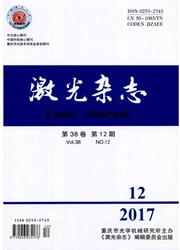

 中文摘要:
中文摘要:
目的:基于被动检测的方法,探索HIFU辐照离体组织过程中,焦域处组织液沸腾的特征声信号。方法使用连续HIFU辐照脱气后的离体牛肝组织,分成四组进行实验,每组重复20次。1、2组应用50W声功率分别辐照10s和80s,3、4组应用200W声功率分别辐照2s和5s。辐照过程中通过B超实时监控靶区回声,同时使用热电偶测量焦域处组织的温度;并通过被动检测方法系统采集焦域处的声散射信号,之后进行快速傅里叶变换。辐照结束后,切开牛肝组织,观察损伤形态。结果辐照中,第2、4组的组织焦域处温度较高,平均最高温度分别为93.52℃和87.76℃,且被动检测系统测得的信号经分析后出现四次谐波幅值的增大,通过B超观察到焦域处有明显的回声增强。而1、3组的温升较低,辐照中的平均最高温度分别为63.23℃和68.24℃,四次谐波幅值未出现明显变化,且焦域处无明显的回声增强。辐照后牛肝中均形成了凝固性坏死,且第2、4组辐照后观察到了损伤形态的形变,第1、3组未见形变。结论:HIFU辐照过程中,被动检测系统所测声散射信号的四次谐波可作为焦域处沸腾的特征声信号。
 英文摘要:
英文摘要:
Objective :To investigatethe acoustic signal characteristics of boiling induced by HIFU irradiation in ex vivo tissueby passive detection .Methods Set four groups of continuousHIFU irradiation parameters and repeated 20 times for each group .Group 1 and 2 were exposed to 50W acoustic power for 10s and 80s respectively ,while group 3 and 4were exposed to 200W acoustic power for 2s and 5srespectively .During HIFU exposurewhich is realtime monitored in B -mode ultrasound image , the temperature in the focal region was measured bythermocouple , acousticscattering signals were collected by passive detection system . ResultDuring the exposure ,the focal region average temperature was higher in group 2 and 4 ,which is 93 .52℃ and 87 .76℃respectively ,compared with63 .23℃and 68 .24℃ in group 1 and 3 .Enhanced echogenicity occurred and the fourth harmonic amplitude significantly increased in group 2 and 4 ,but not in group 1 and 3 .After HIFU irradiation ,all the exposured regions occurredcoagulation necrosis .The lesion pattern deformation appeared in group 2 and 4 ,but not in group 1 and 3 .ConclusionDuringHIFU irradiation ,the fourth harmonic of acoustic scattering signals detected by passive detection system can be used as characteristic acoustic signalof boiling in the focal region .
 同期刊论文项目
同期刊论文项目
 同项目期刊论文
同项目期刊论文
 Serial observations on an orthotopic gastric cancer model constructed using improved implantation te
Serial observations on an orthotopic gastric cancer model constructed using improved implantation te Outcome of unintended pregnancy after ultrasound-guided high-intensity focused ultrasound ablation o
Outcome of unintended pregnancy after ultrasound-guided high-intensity focused ultrasound ablation o Combination of high-intensity focused ultrasound with nanoscale ultrasound contrast agent in treatme
Combination of high-intensity focused ultrasound with nanoscale ultrasound contrast agent in treatme Clinical utility of a microbubble-enhancing contrast ("SonoVue") in treatment of uterine fibroids wi
Clinical utility of a microbubble-enhancing contrast ("SonoVue") in treatment of uterine fibroids wi 期刊信息
期刊信息
